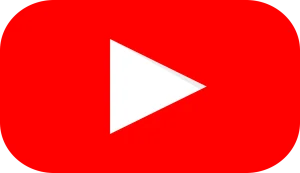Youtube Markeing is the practice of promoting a business, brand, product, or service on the Youtube platform
ouTube marketing is the practice of promoting a business, brand, product, or service on YouTube, the world’s largest video-sharing platform. With over 2 billion monthly active users, YouTube offers a massive audience for businesses to connect with. YouTube marketing involves creating and sharing video content,leveraging YouTube ads, collaborating with influencers, and optimizing videos to reach and engage with viewers.

Components of YouTube Marketing
1. YouTube Channel
A YouTube Channel is a business or individual’s public profile on the platform, where they can upload and organize videos. The channel serves as the central hub for all video content and is a key component of a YouTube marketing strategy. A well-optimized channel includes a compelling description, relevant keywords, a consistent visual theme (like a logo and banner), and organized playlists that make it easy for viewers to find and consume content.
2. Video Content Creation
At the heart of YouTube marketing is the creation of video content. Businesses can create a wide variety of videos, including:
- Product Demos: Videos that showcase how a product works.
- Tutorials and How-Tos: Educational content that teaches viewers how to use a product or solve a problem.
- Brand Stories: Videos that tell the story of the brand, its mission, and its values.
- Testimonials and Reviews: Videos featuring customer testimonials or reviews that build trust and credibility.
- Entertaining Content: Videos that entertain, such as vlogs, challenges, or behind-the-scenes footage.
Quality is crucial when creating video content. High-resolution visuals, clear audio, and engaging editing are essential to retaining viewers’ attention.
3. YouTube SEO
YouTube is not just a video platform; it is also a search engine, and optimizing videos for search is a key aspect of YouTube marketing. This involves:
- Keyword Research: Identifying the terms and phrases that potential viewers are searching for.
- Title Optimization: Crafting a clear and compelling video title that includes the main keyword.
- Description Optimization: Writing detailed video descriptions that include keywords and provide valuable information to the viewer.
- Tags: Adding relevant tags to help YouTube understand the content of the video and suggest it to the right audience.
- Thumbnails: Creating custom thumbnails that are eye-catching and represent the content of the video. Thumbnails play a significant role in attracting clicks.
- Closed Captions and Transcripts: Adding captions or transcripts to make videos more accessible and improve their chances of being found in search.
4. YouTube Advertising
YouTube offers various advertising options that allow businesses to reach a broader audience. The main types of YouTube ads include:
- TrueView Ads: These are skippable ads that appear before, during, or after a video. Advertisers only pay when a viewer watches the ad for at least 30 seconds or interacts with it.
- Non-Skippable Ads: These ads must be watched before the viewer can continue to the video. They are typically 15-20 seconds long.
- Bumper Ads: These are short, non-skippable ads, usually 6 seconds long, that appear before a video.
- Overlay Ads: Banner ads that appear at the bottom of a video.
- Sponsored Cards: These are small, interactive cards that appear during a video, often used to promote products or other videos.
YouTube ads can be targeted based on factors like demographics, interests, and behavior, allowing businesses to reach the most relevant audience.
5. Influencer Collaborations
Collaborating with YouTube influencers can be a highly effective marketing strategy. Influencers have established trust and a loyal following, and their endorsement can introduce your brand to a wider audience. Collaborations can take the form of product reviews, unboxings, sponsored content, or guest appearances.
Benefits of YouTube Marketing
1. Massive Reach
YouTube’s vast user base makes it an ideal platform for businesses looking to reach a global audience. With users from all over the world, YouTube provides businesses with the opportunity to connect with potential customers regardless of geographical boundaries.
2. High Engagement
Video content tends to be more engaging than text or images. On YouTube, viewers can like, share, comment, and subscribe, which fosters interaction and community building. The platform also allows businesses to directly communicate with their audience through comments and live chats.
3. Search Engine Visibility
YouTube is owned by Google, and videos often appear in Google search results. Well-optimized videos can help improve a business’s visibility not only on YouTube but also in broader search engine results.
4. Cost-Effective Marketing
YouTube marketing can be cost-effective, especially for small businesses. Creating a YouTube channel is free, and video content can be produced with minimal investment. Additionally, YouTube ads can be run with flexible budgets, making it accessible for businesses with limited resources.
5. Building Trust and Credibility
YouTube allows businesses to showcase their expertise and build trust with their audience. By providing valuable content, businesses can establish themselves as industry leaders and gain credibility with potential customers.
Challenges of YouTube Marketing
1. Content Saturation
With millions of videos uploaded daily, standing out on YouTube can be challenging. Businesses need to create high-quality, unique content to capture and retain viewers’ attention.
2. Consistency
Building a successful YouTube channel requires consistency in content creation and publishing. Irregular uploads can lead to a loss of subscribers and engagement. Businesses must commit to a regular posting schedule to maintain and grow their audience.
3. Technical Skills
Creating professional-looking videos requires technical skills in filming, editing, and sound design. While it is possible to start with basic equipment, businesses may need to invest in higher-quality tools and software as they scale their YouTube marketing efforts.
4. Algorithm Changes
YouTube’s algorithm determines which videos are suggested to viewers. Algorithm changes can impact a channel’s visibility and performance, making it important for businesses to stay informed and adapt their strategies accordingly.
Best Practices for YouTube Marketing
- Know Your Audience: Understanding your target audience is key to creating content that resonates with them. Use YouTube Analytics to gain insights into viewer demographics and preferences.
- Create Value: Focus on creating content that provides value to your audience, whether it’s educational, entertaining, or inspirational. Valuable content is more likely to be shared and recommended.
- Optimize for Mobile: A significant portion of YouTube traffic comes from mobile devices. Ensure your videos are optimized for mobile viewing, with clear visuals and easy-to-read text.
- Engage with Your Audience: Respond to comments, ask for feedback, and encourage viewers to subscribe and share. Engaging with your audience builds a community and fosters loyalty.
- Use Call-to-Actions (CTAs): Encourage viewers to take action, whether it’s subscribing to your channel, visiting your website, or purchasing a product. CTAs can be included in video descriptions, end screens, or within the video content itself.
Conclusion
YouTube marketing is a powerful tool for businesses looking to reach and engage with a global audience. By creating valuable video content, optimizing it for search, and leveraging YouTube’s advertising and influencer collaboration options, businesses can effectively promote their products and services. While challenges such as content saturation and algorithm changes exist, a well-executed YouTube marketing strategy can lead to increased visibility, engagement, and ultimately, business growth.

